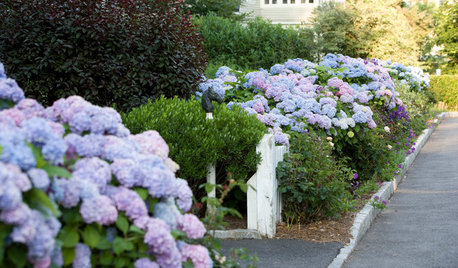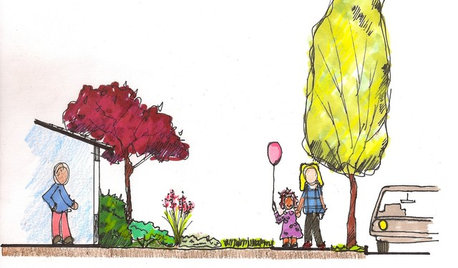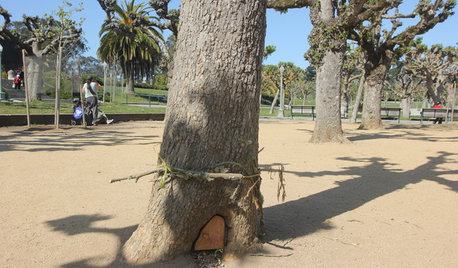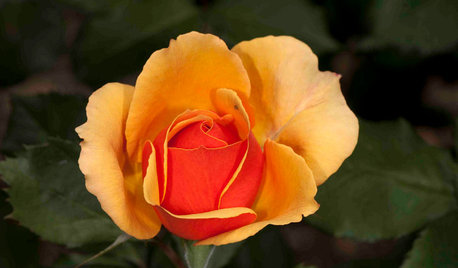Giving away roses in San Antonio ....
roselee z8b S.W. Texas
11 years ago
Related Stories

HOUZZ TOURSHouzz TV: A Spanish-Style Home Full of Color and Joy
A yearlong renovation brings personal stories and fun to a 1920s Mission-style Texas house
Full Story
HOME OFFICESRoom of the Day: Proudly Pink in San Antonio
See how a ho-hum beige box became a luscious and energizing workspace worth showing off
Full Story
GREAT HOME PROJECTSHow to Give Your Driveway and Front Walk More Curb Appeal
Prevent injuries and tire damage while making a great first impression by replacing or repairing front paths
Full Story
FLOWERSWhy You Should Give Hydrangeas a Place in Your Yard
The exuberant mop-headed beauties evoke dreams of an endless summer by the sea
Full Story
LANDSCAPE DESIGNGive Curb Appeal a Self-Serving Twist
Suit yourself with a front-yard design that pleases those inside the house as much as viewers from the street
Full Story
TRAVEL BY DESIGNHomes Away From Home: 6 Appealing International Bed-and-Breakfasts
Live like a local in a foreign land. These design-friendly B and Bs offer comfort and style for a wide range of budgets
Full Story
FUN HOUZZDid Elves Make a Home in a San Francisco Park?
Speculation has swirled around a Lilliputian doorway in Golden Gate Park. We give you the true story — and a design dilemma
Full Story
BEFORE AND AFTERSHouzz Tour: A San Diego Townhouse Gets a Bright Update
Savvy shopping and warm bamboo accents help California architects give their home a fresh, high-end feel
Full Story
SPRING GARDENING5 Exotic Rose Colors for a Beautifully Different Garden
Give red a rest. Let these daring hues take the spotlight instead for a rose garden that turns heads
Full Story
ECLECTIC HOMESHouzz Tour: Ancient and New Tell a Story in San Francisco
Chinese artifacts join 1970s art and much more in a highly personal, lovingly reincarnated 1896 home
Full Story






phoenix7801
roselee z8b S.W. TexasOriginal Author
Related Professionals
Salem Landscape Architects & Landscape Designers · Harvey Landscape Architects & Landscape Designers · Belmont Landscape Contractors · Darien Landscape Contractors · East Haven Landscape Contractors · Pahrump Landscape Contractors · Rockland Landscape Contractors · Sugar Hill Landscape Contractors · Wilton Landscape Contractors · Richmond Window Contractors · Detroit Window Contractors · Jupiter Window Contractors · Poinciana Window Contractors · San Ramon Window Contractors · Washington Window Contractorsroselee z8b S.W. TexasOriginal Author
Lin barkingdogwoods
rock_oak_deer
roselee z8b S.W. TexasOriginal Author
roselee z8b S.W. TexasOriginal Author
rock_oak_deer
roselee z8b S.W. TexasOriginal Author
PKponder TX Z7B
roselee z8b S.W. TexasOriginal Author